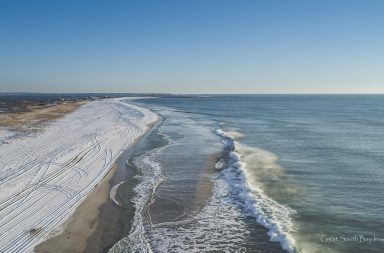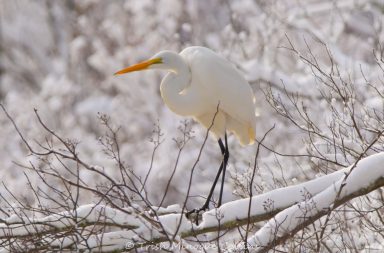Good News for NY Terrapins
By Carl LoBue
On Friday March 16th The Commissioner of NYS DEC signed off on The Certificate of Adoption of regulatory requirements for terrapin excluders in crab traps in most parts New York that are preferred habitat for diamondback terrapins. Thank you to all the Fireislandandbeyond.com readers that submitted comments to DEC on this proposed rule. This is a victory for the terrapins and wildlife lovers. It’s a victory for the heath of Long Islands’ wetlands, and for me, having started down this path more than 18 years ago, it is a lesson in patience and the value of dialog and compromise.
Back in the summer of 1999 my wife and I lived in a small rented cottage in the back of Stony Brook Harbor. One of our favorite things to do on summer evenings was kayak in the harbor and watch the diamondback terrapins. They were generally elusive with little more than their nostrils breaching the water surface. But when we kept very still, and focused our eyes just below the water’s surface, we could watch as their curiosity got the best of them, and they would cautiously approach to check us out.
In contrast to Long Island’s south shore lagoons, blue crabs were traditionally only rarely seen in the bays and harbors of Long Island Sound. But things were different in 1999. Following a mild winter, that summer blue crabs were routinely showing up in lobster traps fished in the western sound. In Stony Brook Harbor, crabs became abundant enough that on a typical evening I was often able net 4-6 large crabs for diner by searching the pilings of the small dock in my landlord’s back yard. By late summer, the crabs caught the attention of a local commercial fishermen who saturated the head of the harbor with about 60 commercial style crab traps with newly painted bright red buoys.
The day after the traps arrived, my landlord, a kind, elderly man who routinely toured the back of the harbor with his small motor boat, expressed concern that he would run over one of the traps that was set no more than 50 feet from his dock. To assist my landlord, I set out to move that trap out of his way. But when I hauled it, my heart sank. Inside it were 7 terrapins. Five were drowned and bloated, two were moribund but still had reflexes. The curious turtles had swum into the traps and could not get back to the surface to breathe. As I looked up, I saw a sea of bright red buoys covering the entire harbor. Beneath each one I envisioned struggling turtles fighting for a breath of air they would never get. The very turtles my wife and I would so often spend time with. Enraged, I wanted to pull out every trap, but in doing so I would have risked criminal penalty and also my career because at the time I was the acting director of NYS DEC Marine Crustaceans Unit, so I knew quite well that it is illegal to tamper with the traps of a commercial fishermen who, under the rules, had done nothing illegal.
After doing some research I learned that terrapins drowning in crab traps was a problem throughout their range, and that, as a result, other states required that crab traps contain devices that constrain the size and shape of the crab trap entrances so that crabs could still get in, but only the smallest sizes of terrapins could fit in. Studies had been conducted that showed these devices, known as By-Catch Reduction Devices, or Terrapin Excluders, had no negative impact on the catch of blue crabs. Nobody, or so I thought, was in a better position to change the rules governing crab traps in NY than me – I was after all, the acting unit chief for NYS DEC’s Marine Crustaceans Unit.
After making the case to Senior DEC officials, showing what other states had done, the department put forward a regulatory proposal that would have required terrapin excluders in crab traps in NY as part of a larger regulatory package that included several other provisions for the lobster fishery. The proposed rule made it all the way to the public comment period, but no further. Those opposing the rule claimed purchasing excluders would be too costly. They claimed the studies showing excluders did not interfere with crab catches were invalid because they were done in other states. And they said that if New York really cared about the welfare of diamondback terrapins, why was it that the DEC offered a $10 wildlife permit allowing holders to sell as many terrapins as they could catch to the growing exotic live food market in NYC. Sadly, the rule was never adopted, and despite clear unequivocal advice from herpetologists that commercial terrapin harvest anywhere in in NY was unsustainable, I was unable to convince DEC’s Bureau of Wildlife to even propose a rule to eliminate it. Soon after that I left my post at DEC to work with The Nature Conservancy where I have been happily employed since.
The prevailing wisdom is that any time a rule making is proposed and rejected it, won’t be considered again for at least a decade – and that’s what happened. Fast forward more than a dozen years to a meeting of the Marine Resources Advisory Council in 2014. These are meetings of the fishing industry and DEC officials that I routinely attend. Unanticipated by me, John Turner, one of Long Island’s best-known naturalists and former Nature Conservancy colleague of mine, stood up and made the case why DEC should adopt rules requiring terrapin excluders in crab traps. I had flashbacks as several audience participants made the same exact arguments against this as they did 12 years earlier. Attempting to garner support of the Council for DEC to proceed with a rule making process for terrapin excluders, I stood up and said that The Nature Conservancy would assist with offsetting any cost to crabbers. The Council, which has no crab trappers on it, agreed that the DEC should proceed and with input from DEC law enforcement, recommended that excluders be required everywhere in NYS, and on all traps sold in NYS. But the very next morning I began getting calls from concerned crabbers that I know from my work in Great South Bay. They said it was their intention fight this.
Continued on Pages 2 and 3



